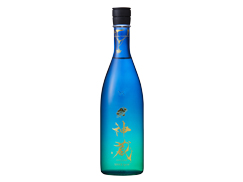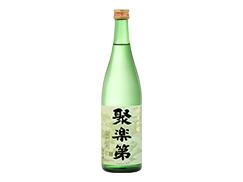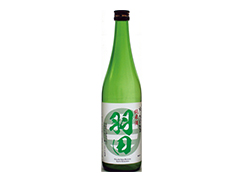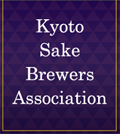Kyo no Miyako Sake
KYOTO SAKE BREWERS ASSOCIATION
Kyo no Miyako Sake is sake brewed in the capital of Kyoto.
The following criteria are met and the Kyoto Sake Brewers' Association certifies the sake as 'Kyo-no Miyako Sake'.
※Certified brands are labelled with the registered trademark 'Kyo no Miyako Sake'.

Japanese sake made in the capital of Kyoto. Sake made from 100% Kyoto-produced rice and groundwater from a place related to the capital of Kyoto as preparation water.
Brewing, bottling, and storage are all done in Kamigyo, Sakyo and Ukyo wards of Kyoto City.
The amount of brewing alcohol added to raw materials for sake must be 25% or less of the weight of raw rice.
List of approved Kyo no miyako sake as at 2023/9/15

Matsui Sake Brewery
Sakyo Ward, Kyoto
- Junmai KAGURA “Midnight Blue” Unfiltered, undiluted, Unpasteurized
- Junmai KAGURA “Clear” Unfiltered, undiluted, Unpasteurized
- Junmai Daiginjo KAGURA “White” Unfiltered, undiluted, Unpasteurized
- Junmai Daiginjo KAGURA "Kyo no Kagayaki" Unfiltered, unpasteurised, unpasteurised sake
- Junmai Daiginjo KAGURA “Sevendays” Unfiltered, undiluted, Unpasteurized
- Junmai KAGURA “Sevendays” Unfiltered, undiluted, Unpasteurized
- Junmai KAGURA Unfiltered, unpasteurised, KYOTOHOLiC PROJECT xxxHOLiC Bottle
- Junmai KAGURA 'Dole', Unfiltered and unpasteurised (available only at GEAR)
- Junmai Daiginjo KAGURA “East Wind” Unfiltered, undiluted, Unpasteurized(Spring season only)
- Kyochitose special pure rice

Sasaki Sake Brewery
Kamigyo Ward, Kyoto
- Jurakudai Junmai Daiginjo
- Nishijin special pure rice
- Ancient Capital special pure rice "Fukumidori"
- Jurakudai KYOTOHOLiC PROJECT xxxHOLiC Bottle
- Jurakudai Junmai Ginjo x Green Juggling (available only at GEAR)
- Ancient Capital Junmai Ginjo x Blue Magic (available only at GEAR)

Haneda Sake Brewery
Ukyo Ward, Kyoto
- Kyokitayama Haneda Junmai-shu
- Kyokitayama Haneda Junmai Ginjo-shu
- Hatsuhinode Junmai, Unpasteurised, "Arabashiri" Nama-SAKE
- Hatsuhinode Junmai Ginjo-shu x Red Mime (available only at GEAR)
- Haneda Junmai Ginjo-shu x Yellow Breakdance (available only at GEAR)
History of sake brewing in the capital of Kyoto
Kyoto was once one of the leading sake-producing regions in Japan.

Sake brewing in Kyoto began around the 5th century by the Hata clan.
In the 8th century, a specialized sake-brewing office called Miki no Tsukasa was established as one of the positions at the inner court of Heian-kyo. More than 10 types of sake were brewed and controlled for imperial ceremonies, and brewing techniques were developed.
Around the 11th century, Sake brewing technologies spread outside the government offices and sake brewing was also practiced in large temples.
When commerce began to be developed, in the 12th century, private brewing also flourished.
According to the 1415 Sake Brewers' Register, there were 342 sake breweries in and around Kyoto.
The first sake brand (trademark) in Japan, Yanagi-no-sake, was made by a sake brewer in Gojo Nishinotoin, Kyoto.

Brewing technology spreading across Japan
The Onin War, which began in 1467 and lasted for 10 years, led to anarchy in the capital of Kyoto. During the subsequent Warring States period, sake brewing techniques in Kyoto spread throughout Japan and local sake was produced in many regions.

From 1603 onwards, the political centre shifted from Kyoto to Edo (Tokyo). The food service industry developed in Edo (Tokyo), and local sake flourished thanks to water transport and supply. As a result, the number of sake breweries in Kyoto declined.

This map is an illustrated map of the city Kyoto from 1895.It is held by the International Research Centre for Japanese studies.
Decline of sake brewing in Kyoto
After the establishment of the association, breweries in the city center were forced to relocate or go out of business due to reasons such as the drying up of well water caused by the opening of the subway and rising land prices, As a result, brewery numbers decreased one by one.
In 1953, under a new law, the association became a union of sake brewing companies in Kyoto City, except for Fushimi Ward. At that time, there were just 29 breweries. Currently, there are only three remaining, breweries.
A graph of the quantity of sake brewed between 1887 and 2021, as recorded by Kyoto Sake Brewers Association, shows that only a small number of sake was brewed in the city of Kyoto. The situation could be described as endangered.

Inherited the tradition of sake brewing in the capital of Kyoto
In order to promote Sake production in Kyoto, the Kyoto Sake Brewers Association has recognized the Matsui Sake Brewery (Sakyo-Ward), Sasaki Sake Brewery (Kamigyo-Ward) and Haneda Sake Brewery (Ukyo-Ward) as 'Kyo no Miyako Sake' brands.
The goal is to widely promote the sake brewing tradition in Kyoto, which was once a major production area and has been passed down to the present day.
References.
- Yoichiro Sato, Kyoto's Food Culture, Chuko Shinsho 2022.
- Hajime Yoshida, Kyo no sakegaku (The study of sake in Kyoto), Rinkawa Sensho 2016.
- Yahiro Fuji, Sake of Kyoto, Shinshindo Shuppan 1971.
- Sakaguchi, Kinichiro, Nihon no sake, Iwanami Shoten 1964.

